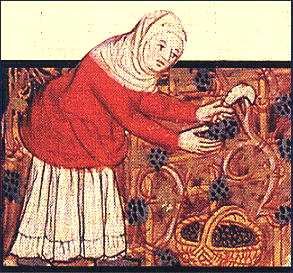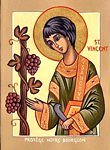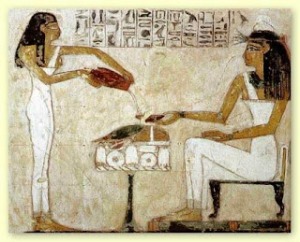From The Black Sheep Wine Shop

Drinking History
By John and Jennifer VerPlanck
Beer and wine have been around as long as civilization. They play a very different role in our lives nowadays though than in the past.
Take St. Patrick’s Day. Who doesn’t like to guzzle green beer and dance around like a leprechaun and pretend they’re Irish? But I don’t think it’s exactly honoring St. Patrick. March 17 was the day of his death and is actually a holy day observed solemnly in Ireland, where he is their Patron Saint. The next time you don those shamrock sunglasses think about St. Patrick who was known to use the shamrock in explaining the Holy Trinity and most likely never drank green beer.
St. Trifon
The plethora of Patron Saints is well known and often includes tales of extreme persecution and devotion that are not soon forgotten. The importance of the vineyard to the local economy and culture is evident by the number of wine related saints. Often a Saint’s Feast Day coincides with the agricultural cycle in the vineyard. Very few tales, such as St. Morand, who is famous for living through Lent off a single bunch of grapes and St. Urban of Langres who is said to have hid from his persecutors in the vineyards, actually have relevance to winegrowing. St. Trifon the Pruner (whose Feast Day is Feb. 14) acquired his name when, I’m sorry to tell you, he had his nose cut off with pruning shears! The winemakers in Bulgaria honor him by the annual trimming of the grape vines, which also symbolizes the end of winter. In France and Germany there are Saints Glaces, (Ice Saints), to whom prayers are offered to ward off dangerous frosts in the vineyard.

Oktoberfest and other harvest related festivals are found throughout Europe and other places of beer and wine production. There are over 30 Saints associated with brewing! Saint Arnold is the most recognized Patron Saint of Brewers and is said to have caused a miracle involving a singular mug of beer that slaked the thirst of a crowd- after his death. No wonder he was so popular!
Saint Arnold
Throughout the Middle Ages, monasteries produced the best quality beer and wine. They had the education, time and resources to maintain their vineyards and enhance their skills. They made wine necessary to celebrate the mass and produced large quantities for sale to support the expansion of their religious movement.
Popular festivities in Medieval England were called ”Ales”, featuring rustic local ales that were a thick and nutritious soupy beverage. Often wine or beer was considered more hygienic than the local water available, too. It was common for ale to be used to pay tolls, rent or debts. Can you imagine getting paid in beer? Wine and beer were often paid out as wages to common laborers in ancient times, particularly in Persia, long before salt was used as “salary”.

From very early times, symbolic gifts of wine have been offered to deities and in rituals honoring the dead. Ancient Egyptians made at least 17 varieties of beer and 24 types of wine and considered beer, especially, to be a necessity of life. In Egypt the phrase,” beer and bread “, stood for all food and was also a common greeting. They had a hieroglyph for a god that was a winepress and they stored beer and wine in the tombs of the deceased for their use in the afterlife. Found in King Tut’s tomb was a sealed clay wine amphora marked as his house wine with the vineyard location, name of the vintner, Khaa, and a vintage…year 5!
©2013 text Black Sheep Wine and Beer Shop
Photos/Illustration credits: Wikimedia commons, public domain.
Jennifer Laskey VerPlanck
|